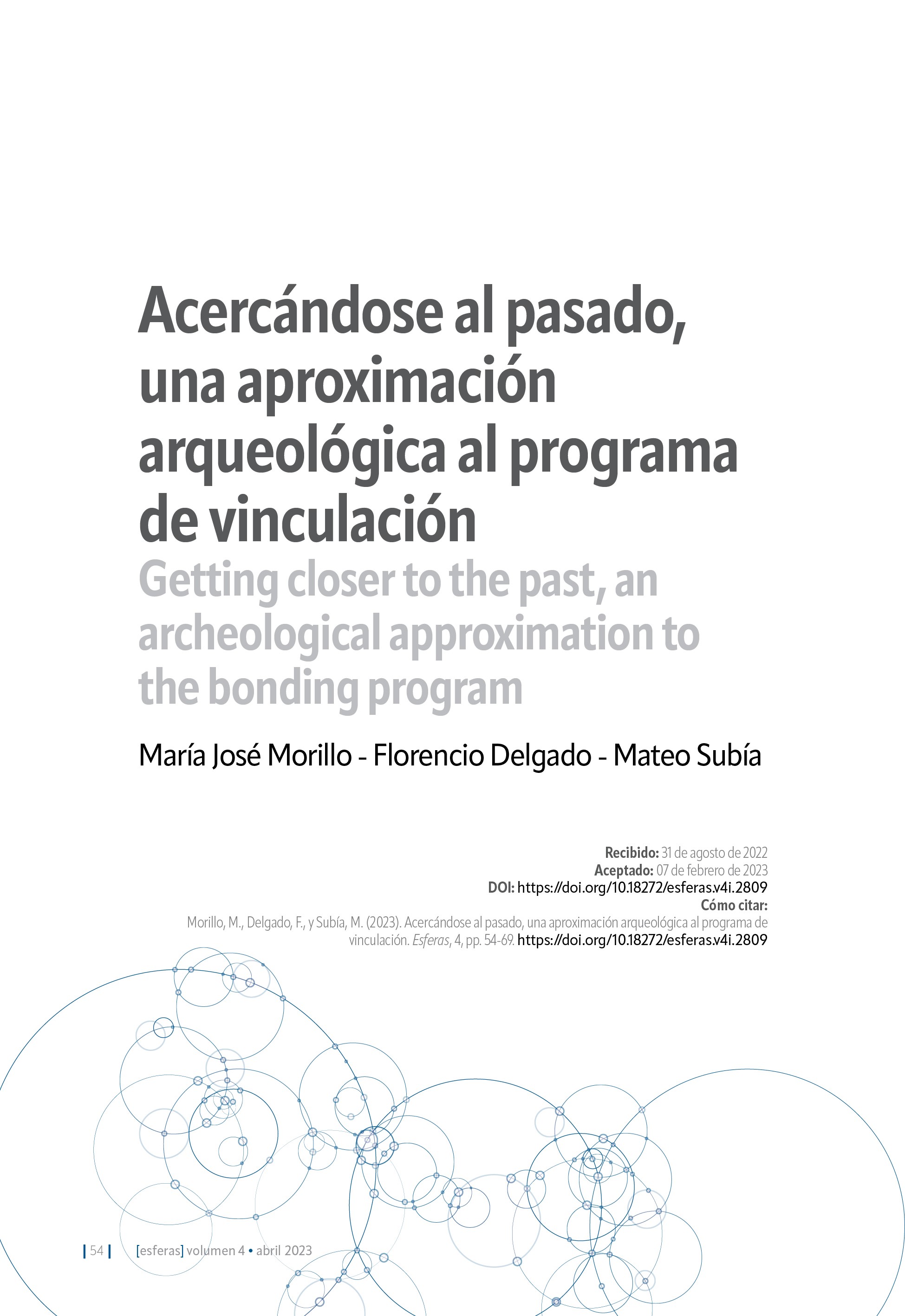Getting closer to the past, an archeological approximation to the bonding program

Published 2023-04-06
Keywords
- Quiauque,
- archaeology,
- community,
- dialogue
How to Cite
Copyright (c) 2023 María José Morillo, Florencio Delgado, Mateo Subía

This work is licensed under a Creative Commons Attribution-NonCommercial 4.0 International License.
Abstract
The “mocarros” is a normal world for the inhabitants of the Coaque river valley in the north province of Manabi. Local oral tradition is full of stories of finding archeological artifacts like vessels and figures. Those figurines called “muñecas”, were traditionally the most wanted, looted and sold artifacts. Since a long time ago, many of the members of the population dedicated their lifes to trading these objects in the national and international market. This practice officially ended with the decreet Nº. 2600 of the National Institute of Cultural Patrimony in 1978 (Consejo Supremo de Gobierno, 1978) that forbids the excavation without government issued permit. In fact, when severe problems affect the local economy, looting for selling continues. Since 2015, the project of community archeology in the valley of the coaque river has allowed interactions between the academy, represented by the professors and students of archeology of the San Francisco de Quito University, local leaders and local community at large. This paper pretends, to show how important the study the past of this coastal valley is and at the same time shows how a process of dialogue and participation with the community creates interactions that builds sense of identity and results on protecting their patrimony.
Downloads
References
- Bauer, D. (2019). Becoming Manta: Archaeology, Place, and Meanings of Indigeneity. Ethnology 50(4), 319–331. 37(148), 41–61. https://www.scielo.org.mx/scielo.php?script=sci_arttext&pid=S0185-39292016000400041
- Center for Innovation in Research and Teaching (CITR), (s/f). Overview of Qualitative Methods. https://cirt.gcu.edu/research/developmentresources/research_ready/qualitative/overview
- Colmenares E., A. M. (2012). Investigación-Acción Participativa: Una Metodología Integradora del conocimiento y la acción. Voces y Silencios. Revista Latinoamericana De Educación 3(1), 102–115. https://doi.org/10.18175/vys3.1.2012.07
- Consejo Supremo de Gobierno. (1978). Creación del Instituto de Patrimonio Cultural (Decreto No. 2600). UNESCO.
- Domínguez Sandoval, V. (2017). Evidencias de Hornos Alfareros en pedernales: Una interpretación de la Producción Cerámica. ReHuSo: Revista De Ciencias Humanísticas y Sociales 1(1), 29–48. https://doi.org/10.33936/rehuso.v1i1.291
- Domínguez, V. (2012). (rep.). Informe del proyecto: Rescate del sitio arqueológico Punta Prieta, cantón Jama, provincia de Manabí. Instituto Nacional de Patrimonio Cultural, Jama.
- Funari, P., Y Garraffoni, R. (2016). Arqueología participativa y empoderamiento comunitario en Brasil. Complutium 27(2), 281-294.
- Gnecco, C. (2012). Arqueología multicultural. Notas intempestivas. Complutum 23(2), 93-102.
- Gobierno Provincial de Manabí. (2015). Plan de desarrollo y ordenamiento territorial Manabí PDOT 2015-2024. Escolaridad.
- Hampe, T. (1989). El reparto de metales, joyas e indios de Coaque: Un episodio fundamental en la expedición de conquista del Perú. Quinto Centenario 15, 77-94.
- Hernández, M., y Ballesteros, R. (2011). Etnogénesis como práctica. Arqueología y turismo en el pueblo manta (Ecuador). Revista de Antropología Iberoamericana 6(2), 159-192.
- Instituto Nacional de Estadística y Censos. (2021). Programa Nacional de Estadística 2021-2025. Instituto Nacional de Estadística y Censos, Quito-Ecuador
- Miño, A. D. (2022). Centro de atención ciudadana - Pedernales. Tesis de Arquitectura, PUCE, Quito.
- Quílez Esteve, L. (2017). Hacia una teoría de la posmemoria. Reflexiones en torno a las representaciones de la memoria generacional/ Towards a Theory of Postmemory. Reflections on the Representations of Generational Memory. Historiografías 8, 57-75. https://doi.org/10.26754/OJS_HISTORIOGRAFIAS/HRHT.201482417
- Salerno, V. M. (2013). Pensar la arqueología desde el sur. Complutum 23(2), 191-203. https://doi.org/10.5209/REV_CMPL.2012.V23.N2.40885
- Vásquez, J. (2010). Si Quieren Ser Inkas… Que Sean Felices. Apachita 11. https://doi.org/https://revistas.arqueo-ecuatoriana.ec/es/apachita/apachita-17/184-siquieren-ser-inkas-que-sean-felices?format=pdf
- Vasquez, J., y Delgado, F. (2016). (rep.). Informe preliminar del Proyecto de Arqueología y Comunidad en Coaque, Cantón Pedernales, Provincia de Manabí Programa de arqueología comunitaria del CIS-USFQ 2015-2016 (pp. 1–45).Quito, Pichincha: CIS.
- Villamar Andrade, R. I. (2019). Estudio de las colecciones privadas de arqueología para el desarrollo del turismo en el cantón Pedernales. Tesis de Ingeniería en Administración de Empresas Turísticas. Universidad Laica Eloy Alfaro.
- Zeidler, J. A. (2016). Modeling cultural responses to volcanic disaster in the ancient jama–coaque tradition, coastal Ecuador: A case study in cultural collapse and Social Resilience. Quaternary International 394, 79–97. https://doi.org/10.1016/j.quaint.2015.09.011
